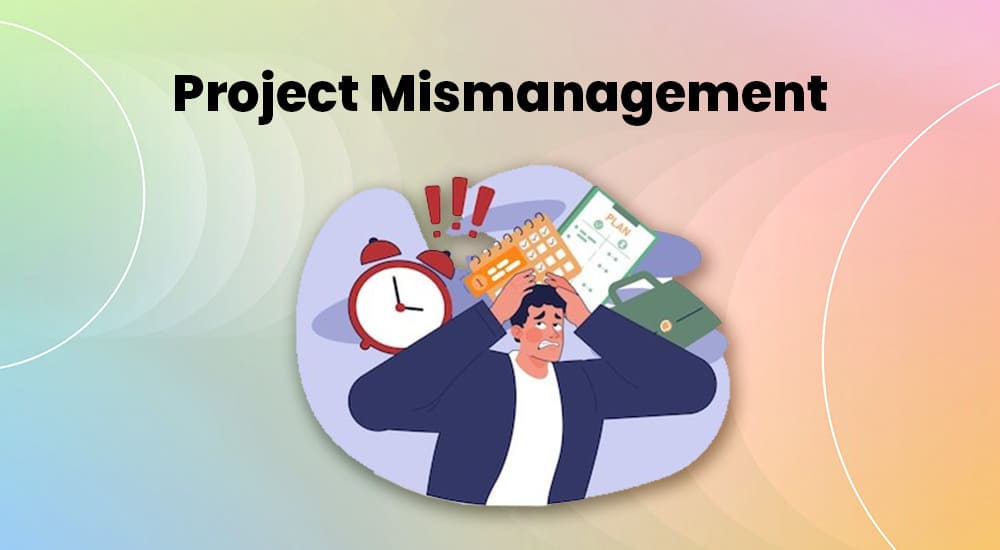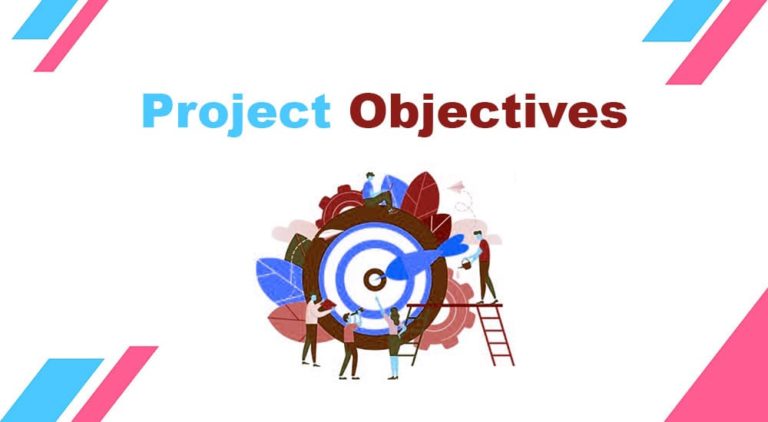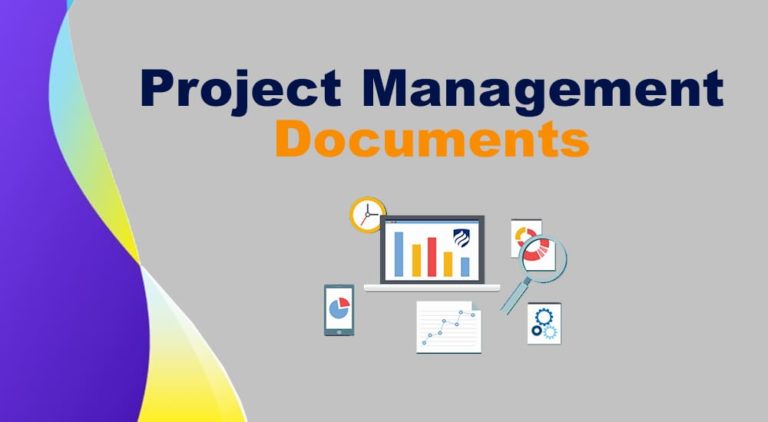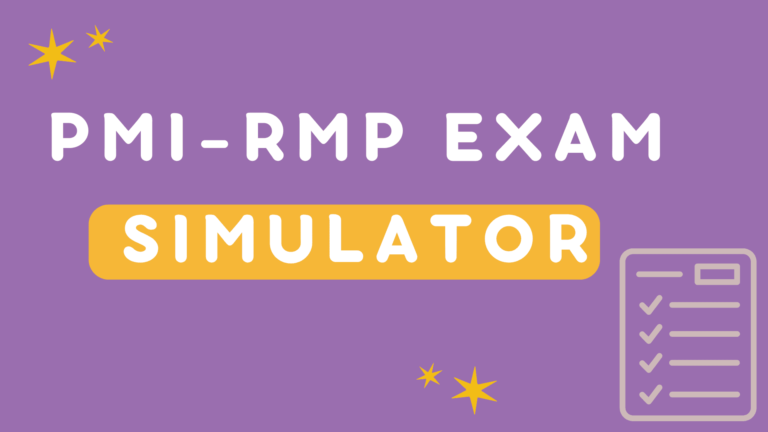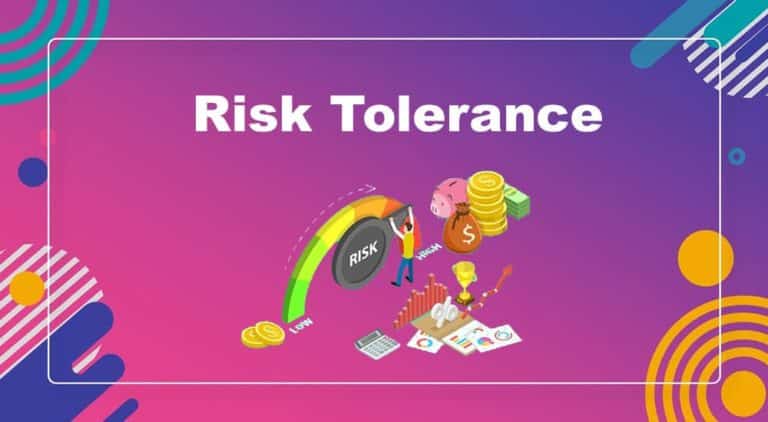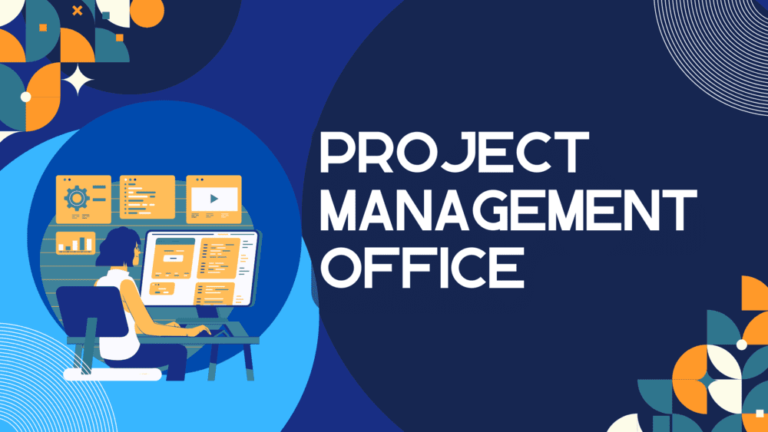Project management is about completing the project, delivering the project deliverables to the client, and ensuring that all stakeholders are happy, while project mismanagement negatively impacts the project objectives.
In today’s post, we will discuss project mismanagement, the consequences of poor project management, and measures to avoid these consequences.
The following are 11 consequences of poor project management or mismanagement:
- Missed Deadlines
- Cost Overruns
- Poor Communication
- Ineffective Resource Allocation
- Scope Creep
- Gold Plating
- Low Team Morale
- Increased Risk of Failure
- Stakeholder Dissatisfaction
- Quality Issues
- Bad Reputation
What is Project Mismanagement?
Project mismanagement occurs when project managers do not develop robust project plans, the team does not execute the plans well, and there is no or weak project control and monitoring. These acts lead to problems and issues or, in extreme cases, project failures.
Poor project management happens when tasks are not assigned correctly, the project misses deadlines, resources are not managed efficiently, or communication breaks down. It is when things go wrong because the project management is inefficient.
Consequences of Project Mismanagement
According to many surveys, schedule delays, cost overturns, poor resource allocation and usage, and poor product quality are the main consequences of poor project management.
Project mismanagement affects team members, the project management office, the organization, and project sponsors. It has short and long-term impacts on organizations and their relations with clients and users. Therefore, you must know about project mismanagement and its consequences so you can take the necessary actions to avoid them.
#1. Missed Deadlines
Missed deadlines are the most common result of poor project management.
It happens due to the following reasons:
- Poor Project Planning: When planning is inefficient, you cannot develop realistic timelines and assign resources effectively. This oversight results in incorrect task-duration estimates, and the project will face delays in completing tasks.
- Poor Communication: Communication gaps between stakeholders can obscure expectations and priorities. Without clear communication channels, team members may focus on non-critical tasks and avoid critical ones.
- Scope Creep: Uncontrolled changes to project scope due to miscommunication can significantly impact deadlines. Team members can add features or requirements without proper evaluation, thus leading to delays or increased costs.
- Inefficient Resource Allocation: Insufficient resource allocation (e.g., time, budget, and manpower) can negatively affect progress. If resources are unavailable when needed or are spread too thin across multiple tasks, then deadlines become harder to meet.
How to Avoid Project Schedule Delays
Schedule delays are most common in projects. However, with proper planning and execution, they can be avoided.
Develop a realistic schedule and assign and manage resources optimally throughout the project lifecycle. Create an open environment to promote transparent communication and ensure everyone understands their roles, responsibilities, and deadlines.
Follow change management processes strictly and evaluate all changes before approval to minimize their impact on the timeline.
2. Cost Overrun
As discussed above, poor project planning, communication, scope creep, inefficient resource management, and other factors affect project cost baselines.
To avoid cost overruns, you must estimate the project activities and costs correctly and execute the project plan as is. Developing and executing the right project plans correctly is the key to avoiding project cost overruns.
3. Poor Communication
Project mismanagement can lead to poor communication due to the following factors:
- Unclear Objectives: Unclear project objectives create confusion. This lack of clarity causes a misalignment of efforts and misunderstandings about project priorities.
- Inadequate Information Sharing: Mismanagement may lead to inefficient information sharing among stakeholders. This affects collaboration and decision-making, as crucial information may not reach those who need it, thus causing delays and errors.
- Lack of Feedback Mechanisms: Without effective feedback mechanisms, team members may feel hesitant to express concerns, share ideas, or ask questions. This can cause issues to be overlooked, which can affect progress and quality.
- Communication Gaps: Ineffective communication from project managers or management can cause communication gaps. If project managers don’t provide clear guidance, direction, and support to their teams, it can create uncertainty and undermine trust among project team members.
How to Avoid Communication Issues
The following strategies can help avoid communication issues:
Clearly define project objectives and expectations. Ensure that all team members understand their roles and responsibilities. Establish open and transparent communication channels, such as regular team meetings, email updates, or project management software, to facilitate information sharing and collaboration.
Encourage active listening and constructive feedback within the team, and promote a culture of openness and trust where team members can comfortably express their thoughts and concerns.
Ensure robust communication, including regular updates on project progress, changes, and any issues or challenges encountered. Develop a collaborative environment where everyone’s input is valued and respected.
4. Ineffective Resource Allocation
Project mismanagement can cause poor resource allocation due to the following:
- Lack of Planning: Inefficient project plans make it difficult to estimate resource requirements accurately. Without a clear understanding of project scope and objectives, assigning resources effectively is also difficult.
- Poor Coordination: Mismanagement results in a lack of coordination among team members and departments. This may cause duplication of efforts, conflicting priorities, or resource shortages in critical areas.
How to Avoid Resource Allocation Issues
The following strategies can help avoid inefficient resource allocation:
Develop a sound project management plan and establish clear project objectives, scope, and resource requirements upfront.
Promote open communication and collaboration among team members, stakeholders, and relevant departments to ensure resource allocation aligns with project priorities.
Implement change management processes to evaluate and approve scope changes, thus considering their impact on resource allocation.
5. Scope Creep
Scope creep is a key result of poor project management and can affect project objectives such as cost, schedule, and scope. Scope creep can occur due to the following:
- Poor Planning: Poor planning can result in unclear project scope, roles, responsibilities, and task assignments. If the scope is not well defined at the start, then miscommunications and misunderstandings can change the project scope during its lifecycle without properly evaluating its impact.
- Inefficient Change Management: A weak or absent change management process can result in changes that are outside your control. Without a structured approach to reviewing and approving changes, scope creep will occur.
- Lack of Communication: Miscommunications among stakeholders, team members, and project managers are a key reason for scope creep.
How to Avoid Scope Creep
The following strategies can help avoid scope creep:
Implement robust change management processes to evaluate and approve proposed changes to the project scope, thus ensuring that they align with project objectives. Instruct team members not to accept change requests verbally; all change requests must be in formal, written form so you can analyze them properly.
Promote open and transparent communication among stakeholders, team members, and project managers to proactively manage expectations and address concerns.
6. Gold Plating
In gold plating, team members add features to the product without any requests from the client or proper review. They believe the client will be happy with their efforts; however, this can backfire when the team must add features that no one requested.
The following are the main causes of gold plating in project management:
- Weak Change Management Processes: When there are no robust mechanisms to evaluate and control project-scope changes, gold plating becomes easier. The absence of formal procedures to assess the impact of proposed changes can result in unchecked expansions of the project scope.
How to Avoid Gold Plating
The following strategies can help avoid gold plating:
You must communicate to team members that no features will be added to the product without proper review and approval and establish a sound change management system.
Promote open and transparent communication among project stakeholders, encouraging regular discussions and feedback sessions to effectively address concerns and manage expectations.
7. Low Team Morale
Project mismanagement can cause low team morale due to the following reasons:
- Unclear Expectations: When project objectives, roles, and responsibilities are not clearly communicated, team members can become confused about their individual roles and responsibilities, which can lead to frustration, disengagement, and low team morale.
- Lack of Support: Inadequate support from project managers can demoralize team members.
- Micromanagement: Micromanagement affects the autonomy of team members and erodes trust, which can demotivate team members.
- Inadequate Recognition: Failure to recognize and celebrate team achievements can make team members feel undervalued and unappreciated. Lack of acknowledgment for their hard work and contributions can lead to demotivation and disillusionment.
How to Avoid Low Team Morale
Improving team morale is a key part of leadership style.
Ensure the project plans are robust, roles and responsibilities are clear, and task assignments are not ambiguous. This reduces conflicts and smoothens the work environment.
Provide support, training, and guidance to team members when needed. Give them the flexibility to work freely and little authority to make decisions. Trusting individuals to make decisions and solve problems independently can boost morale and motivation.
Recognize and celebrate team achievements regularly, acknowledging individual contributions and efforts.
8. Increased Risks
Poor project management will result in inefficient risk management. The project manager will miss many risks, and the analysis and risk response plans will also not be enough to manage the identified risks.
All these contribute to the increase in project risks.
How to Avoid Risks
You must develop robust project plans, including a risk management plan.
Identify risks with stakeholders’ help and develop a sound risk response plan after qualitative and quantitative analysis of each risk.
Monitor and control risks until the project is closed.
9. Stakeholder Dissatisfaction
Project management is about stakeholders’ satisfaction; your project is not successfully completed if the stakeholders are unsatisfied. Poor project management leads to stakeholders’ dissatisfaction as follows:
- Unmet Expectations: When project objectives, timelines, or deliverables are not clearly defined or communicated, stakeholders may have unrealistic expectations. Failure to meet these expectations due to mismanagement will result in dissatisfaction.
- Delays and Budget Overruns: Project mismanagement can lead to delays or budget overruns, which can negatively impact stakeholder satisfaction and cause stakeholders to lose trust in the project team.
How to Avoid Stakeholder Dissatisfaction
You must establish clear, realistic project objectives and expectations, thus ensuring alignment with stakeholder needs and priorities.
Develop a sound communication management plan, engage your stakeholders throughout the project life cycle, and fulfill their communication needs. Promote open dialogue and transparency to address concerns and manage expectations effectively.
Ensure stakeholders are involved in decision-making processes and understand the rationale behind changes.
10. Quality Issues
Project mismanagement can lead to quality issues in several ways:
- Inadequate Planning: Poor planning can result in insufficient consideration of quality requirements. It can be challenging to ensure that project deliverables meet expected quality levels without clear quality objectives.
- Rushed Execution: Mismanagement may lead to unrealistic deadlines or resource constraints, which will force teams to rush through tasks. This approach can compromise quality because team members may cut corners or overlook critical quality checks in their haste to meet deadlines.
- Lack of Oversight: Ineffective project supervision can result in oversights during quality control processes. Without proper monitoring and review mechanisms, quality issues can go unnoticed or unaddressed until they escalate.
How to Avoid Quality Issues
The following can help avoid quality issues:
Conduct thorough planning to establish clear quality objectives, standards, and criteria upfront. Ensure that quality considerations are integrated into project plans and processes.
Provide adequate time and resources for quality assurance and control activities throughout the project lifecycle. Prioritize quality checks and reviews to ensure that deliverables meet established standards.
Promote a culture of quality accountability and responsibility within the project team. Encourage team members to take ownership of their work and prioritize quality deliverables.
11. Bad Reputation
Project mismanagement can tarnish a company’s reputation in several ways:
- Missed Deadlines: When projects consistently fail to meet deadlines, it reflects poorly on the organization’s ability to deliver on its promises. Clients will consider the organization to be unreliable or untrustworthy.
- Poor Quality Deliverables: Quality issues can damage the organization’s reputation for delivering high-quality products or services. If customers receive poor products or experience frequent defects or errors, then they may lose confidence in the organization’s capabilities.
- Cost Overruns: Mismanagement often leads to budget overruns, thus indicating poor financial management. Stakeholders may view the organization as financially irresponsible or inefficient, thus eroding trust and confidence in its ability to manage resources effectively.
How to Avoid a Bad Reputation
To avoid a bad reputation, you must complete the project successfully. This involves developing the project plan thoroughly, executing the plan well, monitoring and controlling the project, and delivering the project deliverables to the project sponsor or client.
In short, you must follow the best project-management practices and engage with stakeholders to satisfy them.
Summary
Above, I have provided 11 consequences of poor project management. Project mismanagement is bad for organizations and is one of the key reasons for business failure. As a project manager, you must follow the best project-management practices to successfully manage and complete projects, thus ensuring that the client achieves the project’s benefits.

I am Mohammad Fahad Usmani, B.E. PMP, PMI-RMP. I have been blogging on project management topics since 2011. To date, thousands of professionals have passed the PMP exam using my resources.

